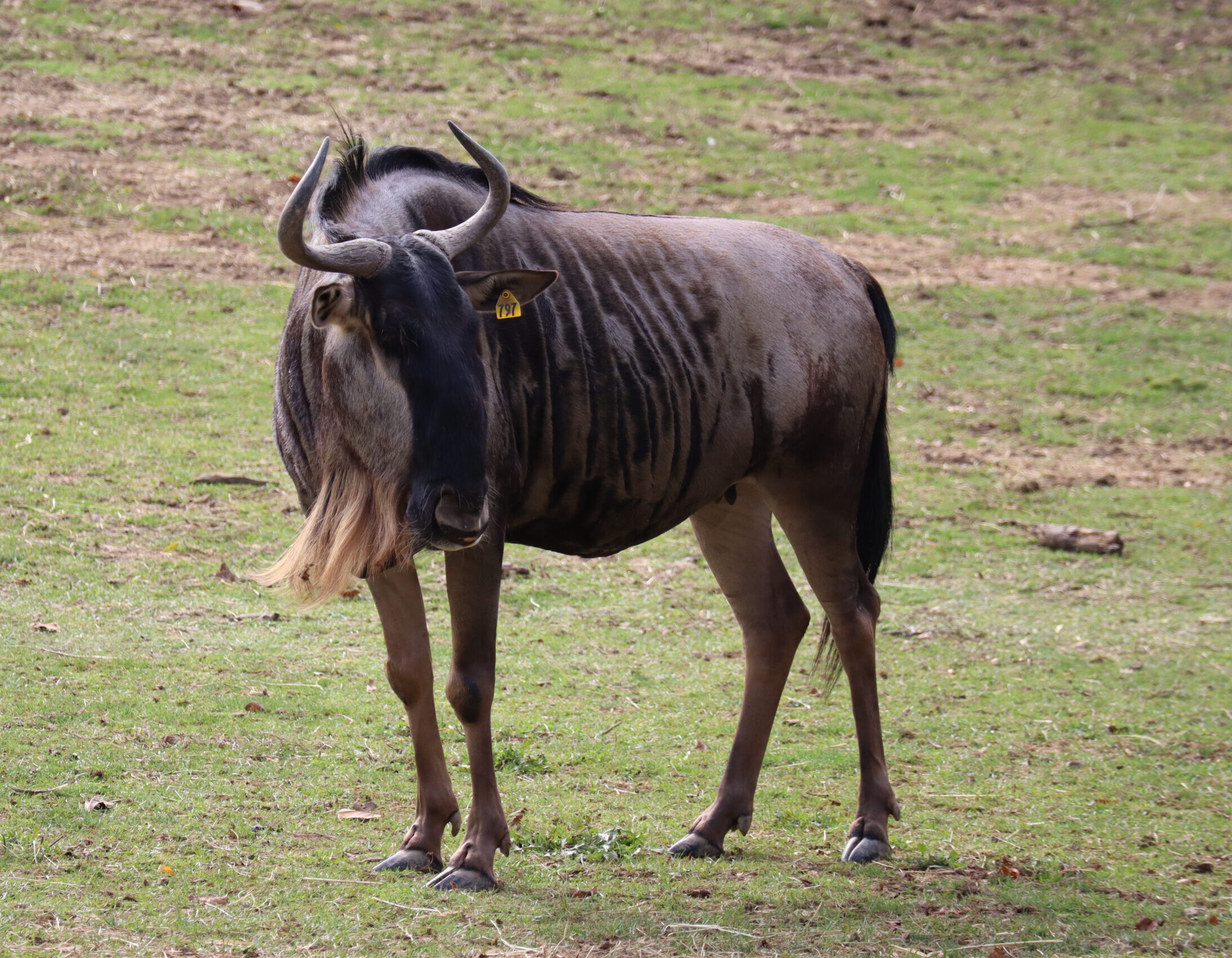White-bearded wildebeest and their vast migratory habits play a very important role within their ecosystem. As wildebeest migrate, their grazing and pressing down of grasses in their footpaths help new grasses grow. Additionally, their waste helps fertilize the grass and soil as they move.
I LIVE IN AFRICA
White-bearded wildebeest are most often found living in plains areas of African countries like Kenya and Tanzania.
I AM AN HERBIVORE
This species of antelope will eat both short and tall grasses, depending on what season it is. Their diet and migration pattern is intertwined, they will migrate in response to grass availability.
WHITE-BEARDED WILDEBEEST ARE SOCIAL
White-bearded wildebeest are a very social species and will sometimes migrate in groups of up to 1 million individuals. Male wildebeest will leave the heard once they have reached maturity, where they will live in bachelor groups before establishing a territory. Female wildebeest will often remain with their original heard for the entirety of their lives.
ALWAYS ON THE MOVE
Wildebeest have one of the greatest migration paths that is entirely dependent on rainfall. Every year, upwards of one million wildebeest travels in a circular migration.
HELPING THE WHITE-BEARDED WILDEBEEST IN THE WILD
The white-bearded wildebeest at the Fort Wayne Children’s Zoo are enrolled in the Species Survival Plan (SSP). SSP is a program implemented by the Association of Zoos and Aquariums (AZA) to help ensure a genetically viable population exists.

